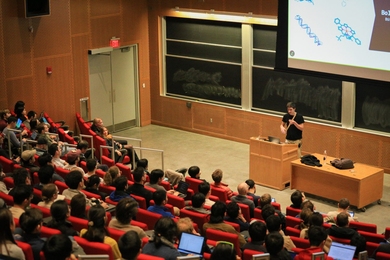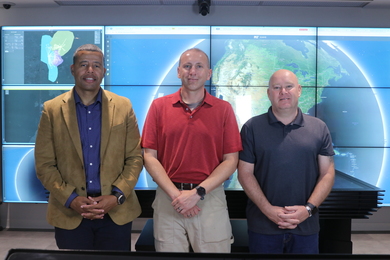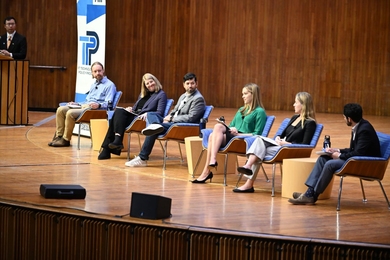From smart gels to wearable computers, MIT research has figured prominently in several recent news stories. Some examples:
Wheelchair/bed
Popular Science wrote about an MIT invention in its October issue. A new "wheelchair/bed" developed by Ford Professor of Engineering Harry Asada and colleagues "eases the shift from chair to bed. The wheelchair portion docks into a horseshoe-shaped frame and reclines to form a twin bed. The chair is controlled by joystick or remotely via the unit's onboard computer." Work on the prototype Reconfigurable Holonomic Omnidirectional Mobile Bed with Unified Seating (RHOMBUS) is through the Department of Mechanical Engineering. (MIT Tech Talk, April 3, 1997)
Smart gels
Physics Professor Toyoichi Tanaka's work with "smart gels" was featured in an October issue of Fortune magazine. Writes Gene Bylinsky: "Unlike the 'dumb' gels used in, say, diapers, which expand only slightly as they absorb moisture, these high-IQ ones will expand to 1,000 times their volume, then shrink to original size." Applications currently on the market include the soles of golf shoes "which when heated by the foot conform for a perfect fit. Another likely use: coating for esophageal tissues damaged by stomach acid."
Self-assembling peptides
A recent patent issued to Shuguang Zhang at the Center for Biomedical Engineering and colleagues prompted a story in Bio/Med Technology Alert newsletter. The self-assembling peptides being developed by the researchers "may have applications in tissue engineering and drug delivery," according to the newsletter. "The peptide is a viable substrate for cells to attach and differentiate." Animal cells tested include those from skin, liver, kidney, bone and pancreas. (MIT Tech Talk, April 28, 1993)
Wearables
The Media Lab's recent conference on wearable computers (MIT Tech Talk, October 22, 1997) generated intense media coverage, including stories in The New York Times and Newsweek. Wrote Newsweek's Steven Levy: "Some of it seemed frivolous, like wigs that change shape as your emotions shift; But underneath it all was some serious technology." See the web for more on the International Symposium on Wearable Computers.
A version of this article appeared in MIT Tech Talk on November 19, 1997.





